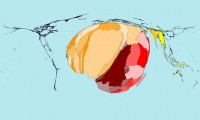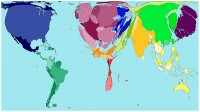I just read a fascinating feature in Science on minimally invasive autopsies. In short, we know very little about what kills people in developing countries because autopsies are rarely done. One way that people are trying to correct this is by developing autopsy methods that rely on small amounts of fluids and tissues removed from a cadaver using needles. Unlike a normal autopsy, this approach leaves the body largely intact and therefore, might be more acceptable in cultures with strong taboos against cutting open the dead.
I think the topic is inherently interesting, but I was also struck by how well the piece was written. It was gripping in a way that only great nonfiction can be – the Immortal Life of Henrietta Lacks comes to mind as another example. One paragraph that I found particularly striking was the following:
One figure—or really two figures—sums up the problem. A few years ago, the World Health Organization (WHO) and the Institute for Health Metrics and Evaluation (IHME) in Seattle, Washington, each tried to determine how many people died of malaria in 2010. WHO calculated 655,000 deaths, IHME 1.24 million. Two of the world’s most respected health groups could barely agree within a factor of two, and similar problems exist with AIDS, tuberculosis, and other killers.
To me, this is such a concise and elegant summary of the problem. It’s a way to present numbers that makes you pause. It’s the kind of paragraph that I would love to write. Another striking paragraph comes at the end of the piece, and the end of an autopsy described by the author:
A [minimally invasive autopsy] would also have left Antonio’s body in better shape for his family—pockmarked, but in one piece and recognizably human. Still, the eviscerator does what he can for decorum, sewing up the torso and scooping every organ—even the brain—into the abdomen. He slots the sternum into place, and tugs the final stitches taut.
Unlike the previous paragraph, this one is all about the small details that stick in your mind. And that detail, of the brain being placed back in the abdomen at the end of a conventional autopsy, is going to stay with me for a very long time.




